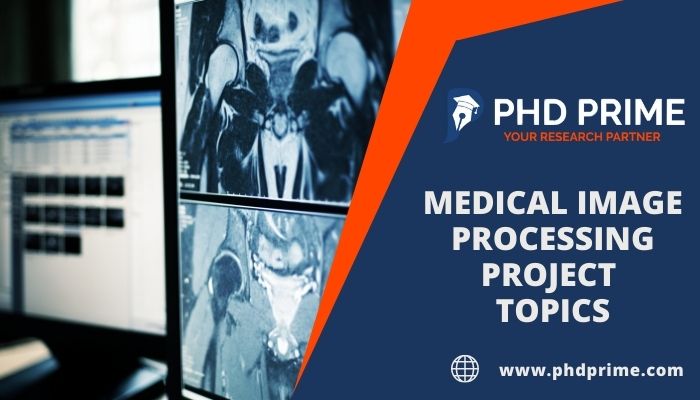Medical imaging is the method of analysis used by physicians to understand the illness and disorder in the patient’s body. Damages in the internal organs or tissues must be identified with care. It must be of the utmost accuracy. Medical image processing project topics are gaining importance mainly for this reason. On this page, let us have a brief understanding of medical image processing and its research.
Though treatment is the main motive of capturing and processing medical images, it is also the study and research that is being carried out based on these images, that make their instrumentation and processes even more significant. Now let us start with the artifacts in medical processing.

WHAT ARE THE ARTEFACTS IN MEDICAL IMAGING?
There are certain issues associated with medical imaging and its processing. The artifacts encountered during the process are one of the most potential barriers to the study of medical images. The following are the major artifacts in medical imaging.
- Susceptibility
- Wrap-around
- Gradient
- Noise (RF)
- Gibbs ringing
- Motion
- Intensity (inhomogeneity)
- Partial volume
These artifacts are unavoidable. But the output can be improved by making modifications in the techniques used for imaging and processing. Researchers across the globe are building upon this aspect.
We are one of the professional and legitimate online research guidance providers in the field of medical imaging and processing. We have guided about 400+ medical image processing projects in the field. We have our experts who are highly skilled and able enough to rectify all your queries. They have huge experience in implementation too. Now we will provide you with some research areas in medical image processing.
RESEARCH AREAS IN MEDICAL IMAGE PROCESSING
The following are the potential areas of research in medical image processing project topics. We have a guidance facility for all the following topics.
- Tracking motion
- Registration of images
- Diagnosis specific to patients
- Integrating biomarkers (imaging and non-imaging)
- CAD or Computer-Aided Diagnosis
- Assessing image (quality, formation, and reconstruction)
- Fusion and segmentation of images
- Digital endoscopic techniques
- Image analysis (based on model)
- Multi-modal methods (diagnosis and imaging)
- Classification and machine learning
- Advanced analysis techniques of medical images
- Processing and analyzing methods
- Artificial intelligence and deep learning (medical imaging and video)
- Imaging analysis (diffusion-weighted)
Imaging techniques provide a huge chunk of opportunities for further research by readily providing spaces for the application of current developments in artificial intelligence, deep learning, and machine learning. As a result diagnosis and treatment are becoming easier than before. Statistical data of real-time applications of these are available with us.
Also, you can get a massive amount of reliable resources when you get in touch with our expert team. Reliable information is essential for good research. We provide you with a one-stop solution to your entire search for data, surveys, research proposal, recent developments, etc. Now let us explain to you about one of the important parts of medical image processing project topics that are medical image segmentation.
WHAT IS MEDICAL IMAGE SEGMENTATION?
The method by which the digital image is broken down into various sets of pixels for deeper visualization and analysis is called medical segmentation. The major reasons for the image segmentation are given below.
- Highlighting the essential part out of the background
- Categorizing the necessities into groups (based on common features)
- Make an in-depth analysis
Segmentation of medical images cannot be done randomly. As you know there are so many artifacts associated with imaging processes. The images can be analyzed only by obtaining a quality output amidst these artifacts. Thus an algorithm for segmentation has to be chosen only by considering these factors. The following factors must be considered for choosing a segmentation algorithm.
- Noise (sensors and other instruments)
- Artifacts (motion, ring, etc.)
- Partial volume effect
These aspects have to be the guiding factors for choosing the best algorithm for segmentation. You can get in touch with our experts to know more about how these factors influence the process of medical image processing especially segmentation.
They will provide you with more information on practical difficulties that one would face while doing research in medical image processing project topics. Now let us see about some of the techniques available for the segmentation of medical images.
MEDICAL IMAGE SEGMENTATION TECHNIQUES
The following are the different methods adopted for the segmentation of medical images. The methods are grouped on the basis of classification, approaches, and models used. You might be aware of some or all of these techniques. But further and deeper insight on these techniques you can connect with our experts.
- Deformable models (snake model and level sets)
- Conventional methods (edge and region-based, threshold)
- Other techniques (fuzzy, statistical, and neural network)
- Models
- Noise
- Artifacts
- Structures with weak boundaries
- Operation – automatic, semiautomatic, and manual
- Globally the segmentation is carried out based on region
- Locally the methods are based on pixels
- Segmentation approaches
- Model-based (Markov random field, multispectral mapping, deformable models)
- Low level (region growing, thresholding)
The above different methods for the segmentation of medical images can be attributed to the research and development in the field. So you can also work on the segmentation techniques and bring out the most successful project by incorporating the latest technologies into the field.
Before attempting to start your research on image segmentation, it becomes essential to understand the various stages in the process of segmentation. In the following section let us see about the different stages of medical image segmentation.
STAGES IN MEDICAL IMAGE SEGMENTATION
There are many steps involved in the segmentation of medical images. These steps might be already familiar to you. But our experts always believe in taking responsibility for guiding from the basics. So they have provided the following various stages in image segmentation
- Data sets of medical images are to be obtained.
- Training set(training of the network model)
- Verification set(adjustment of hyperparameters)
- Test set (verification of final effect)
- Increasing data set size
- Pre processes(for image expansion)
- Input image standardization
- Rotation and scaling
- Segmentation of output images using proper methods
- Performance is evaluated (verifying the parameters)
The above steps are the stages involved in image segmentation. Each of these processes in itself is a huge field providing great scope for future research. We say this certainly because we have been guiding medical image processing project topics for students and research scholars from top world universities. So we get to know about the details of ongoing researches in the field more easily through our clients and expert contacts.
So from us, you can get a lot of data and details on medical imaging research. You can rely on us for your entire research support till publishing in top medical image processing journals list. Now in the next section let us see about medical image segmentation datasets.
MEDICAL IMAGE SEGMENTATION DATASETS
The algorithms and data sets play major roles in medical image segmentation. Each organ has its own features and the imaging techniques vary with these features and artifacts associated with it. So it becomes important to know about different datasets. The following are the different segmentation datasets associated with different organs.
- CHAOS (kidneys, liver, spleen)
- Mtop (brain)
- BRATS (brain)
- PROMISE12 (prostrate)
- AMRG Cardiac Atlas (Heart)
- NIH Pancreas (Pancreas)
- Sliver07 (liver)
- KITS (kidney)
- ISLES (Brain)
- OASIS (Brain)
- LIDC-IDRI (Lung)
- Colonography (colon cancer)
- 3Dircadb (liver)
- LiTS (liver)
- Medical segmentation decathlon(colon, lung, hippocampus, brain tumor, liver, hepatic vessel, prostate, heart, pancreas, spleen)
With these datasets, the possibility of using machine learning and big data analytics in image segmentation is enhanced. When you get trained using machine learning tools and algorithms, you can make fascinating projects out of it. Our experts are ready to help you with this. Get connected with us and know more details about it. Now let us see about the metrics used for the evaluation of segmentation of medical images.
MEDICAL IMAGE SEGMENTATION EVALUATION METRICS
It is important for us to evaluate our projects on implementation. Only then it can be adopted for practical use. The following are different metrics used for the evaluation of performance.
- Hausdorff distance
- Rate of Over segmentation
- Accuracy of segmentation
- Dice index
- Under segmentation rate
- Jaccard index
We are at this point very much proud to tell you that all the projects delivered by us have excelled in these metrics. You can get the details of the performance of all our projects and our experts will provide you with the necessary technical details of them.
We always motivate our customers to first understand the future course of the research topic in which they are interested. We believe that this can act as a motivating factor to take up research in that field. So now let us see about the future research ideas in the processing of medical images
FUTURE RESEARCH IDEAS IN MEDICAL IMAGE PROCESSING
The following are the research ideas that have the potential for future development.
- Custom model (input and output, pre-processing and post-processing)
- Fast and intuitive model utilization (prediction and training)
- Analysis of images (patch wise / patch wise)
- Medical image segmentation in two and three dimensions (multi-class and binary problem solving)
- Augmentation and pre-processing (input and output processing)
With this explanation on medical image processing project topics, we conclude that your research motive can become a game-changer when your project becomes a successful one. We are here to make it so. You can get the help of our subject experts for your research. Contact us for more information.





















